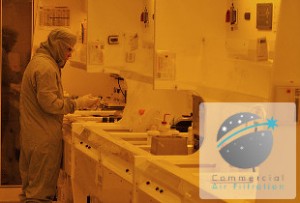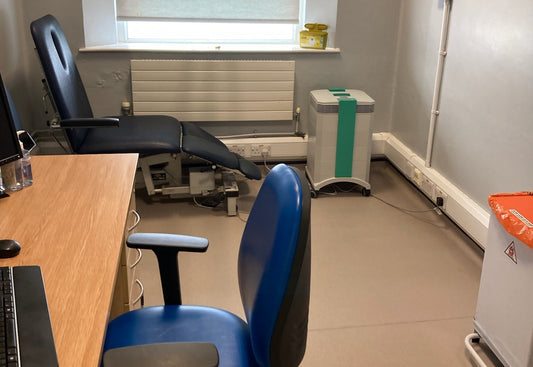Setting up positive and negative pressure rooms is an effective way of creating an isolation room and has many applications in healthcare and in industry – in fact, in any situation where cleanliness of the air is a priority.
In positive and negative pressure rooms, air flow is controlled so it always flows from less to more contaminated areas. Control is achieved by adjusting the pressure differential between supply and exhaust air.
Positive Pressure Environment
Air pressure in the room under positive pressure is higher than outside, so contaminants (particles, viruses, bacteria) are kept out. This is done by ensuring that the exhaust air is run 10-15 per cent lower than the supply air. The pressure differential is more than 2.5 Pa and ideally should be 8 Pa. The positive pressure environment is used to protect patients in operating theatres, so that infection does not enter open body cavities, and to protect patients with HIV infection, or other conditions linked to a compromised immune system, being nursed in isolation rooms. Positive pressure rooms - also often known as a protective room - are also important in the microelectronics industry where the particulate count in the environment has to be extremely low in order to preserve the integrity of the microchips/circuit boards being manufactured.
Negative Pressure Environment
The air pressure in the room under negative pressure is lower than outside so that contamination from the room does not flow out into surrounding areas. Exhaust air is run 10-15 per cent higher than the supply air. The pressure differential should be greater than 2.5 Pa. The negative pressure environment is used for airborne infection control to protect people from patients with very contagious disease (eg TB). The air exiting a negative pressure environment has to be filtered with a high-efficiency particulate air (HEPA) filter and through a certified leakage free system to completely remove viruses and bacteria.
For positive and negative pressure rooms to work most effectively, there are a number of other factors to be considered, namely:
- The air entering the room should be filtered with a HyperHEPA filter.
- An adequate number of room air changes per hour has to be achieved.
- The door of the isolation room should be self-closing.
- Windows, floors and ceilings should all be well sealed.
- Fans and other components should be well maintained.
- In-line monitoring of pressures is essential.
- There should be an ante-room between the isolation (negative or positive pressure) room and the corridor/surroundings to provide a controlled environment for donning or taking off protective clothing and delivering equipment.
The idea of positive and negative pressure rooms is not new, but modern developments have meant that technology is much more widely available. One of the reasons for this is that complicated and expensive air handling systems are no longer the only choice – the same results can be achieved with much simpler systems that offer a more impressive price-to-performance ratio.
Commercial Air Filtration can help you to build positive or negative pressure rooms, using the most cost-effective and reliable filtration technology available. One of our most popular products for cleanroom environments is the IQAir Cleanroom H13 in combination with an IQAir In-Flow or Out-Flow. Contact us today to find out more – 020 3176 0524.




